What’s Your Dog Saying? A Guide to Dog Body Language
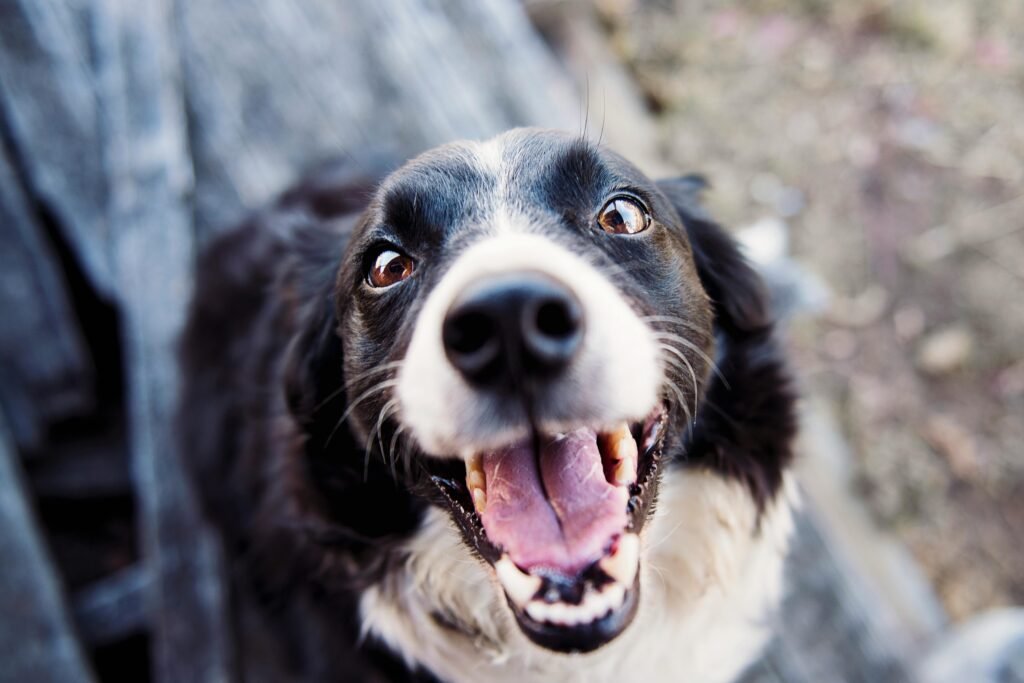
Dogs are like furry little communicators, each with their own unique ways of expressing themselves. If you pay close attention, your dog’s body language can reveal what’s going on in their adorable head. From the twitch of an ear to the wag of a tail, every movement tells a story.
- Ears
Let’s start with those ears. Perky, forward-facing ears usually mean your dog is alert and interested, as though they’re saying, “What’s going on here?” On the other hand, ears flattened back against the head are a clear sign of fear or submission—like little satellite dishes picking up signals of discomfort or unease. - Eyes
Eyes are another big giveaway. When your dog’s eyes are soft and relaxed, it’s a sure sign of contentment. But if their eyes are wide and you see the whites (often called the “whale eye”), they’re likely stressed or anxious. And those intense stares? They might mean excitement or, sometimes, an eager invitation to play. - Mouth
Even your dog’s mouth has its own language. A loose, open mouth with a hanging tongue? That’s the universal sign of a happy dog. But when lips are pulled back to reveal teeth, your dog is giving you a serious warning to back off.
By tuning into these visual cues, you’ll unlock a deeper understanding of what your dog is feeling—and what they might need from you.
Tail Positions and Their Movements
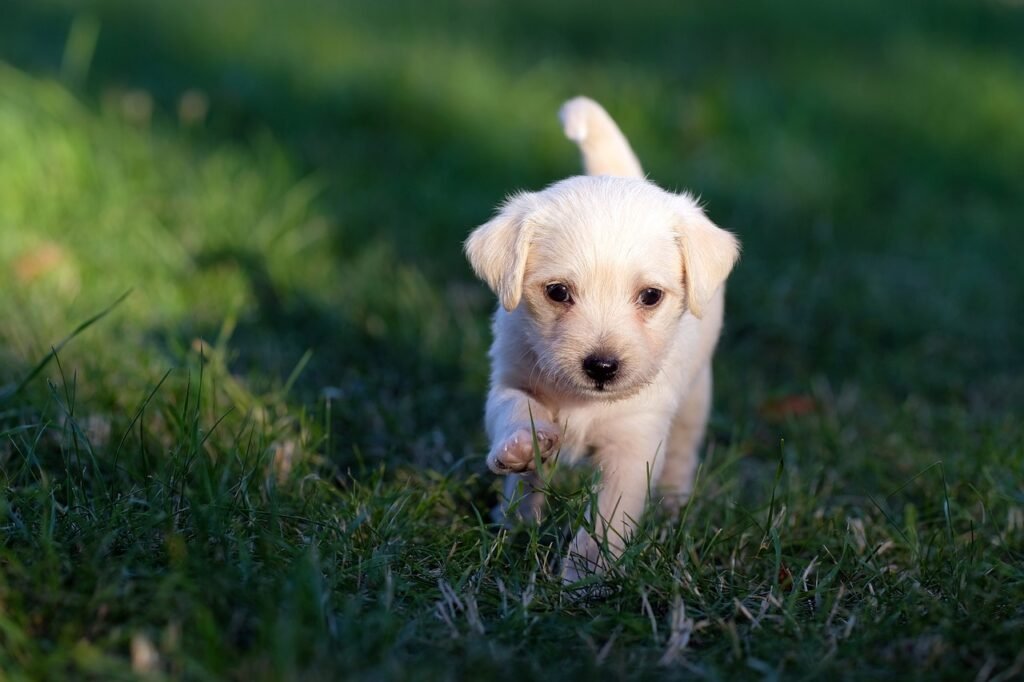
The tail is like a dog’s emotional antenna, constantly broadcasting their mood and state of mind.
- High, wagging tail
Picture your dog’s tail held high and wagging enthusiastically—it’s pure excitement and confidence! It’s like your dog is saying, “I’m thrilled to be here!” - Low or tucked tail
A low or tucked tail, however, is a different story. It’s a sign of fear or submission, as if your dog is quietly saying, “I’m not feeling so sure about this.” - Subtle details
Did you know? Dogs wag their tails more to the right when they feel positive emotions, such as interacting with their favorite human. It’s a small, fascinating detail that can give you even more insight into your pup’s feelings during those special moments.
Expressions on the Face

Your dog’s face is an open book, if you know how to read it.
- Eyes
Soft, squinty eyes are a clear signal that your dog is relaxed and happy. But when you catch that “whale eye,” where the whites are visible, take note—it’s a red flag for anxiety or discomfort. - Ears
Perky ears pointing forward usually mean curiosity or interest, while flattened ears scream fear or submission. You might even notice your dog’s ears swiveling like little radar dishes, picking up every sound around them. - Mouth
A happy dog’s mouth is often slightly open with a relaxed jaw and maybe even a dangling tongue—a true sign of contentment. On the flip side, lips pulled back tight to expose teeth mean, “I’m serious—give me space.” - Forehead and facial wrinkles
Don’t forget those cute facial wrinkles! A furrowed brow often signals worry or confusion, while a smooth forehead means your dog is feeling calm and at ease.
The next time your dog gives you that irresistible head tilt, remember—it’s not just adorable; it’s part of their intricate system of communication!
Body Posture and Stance
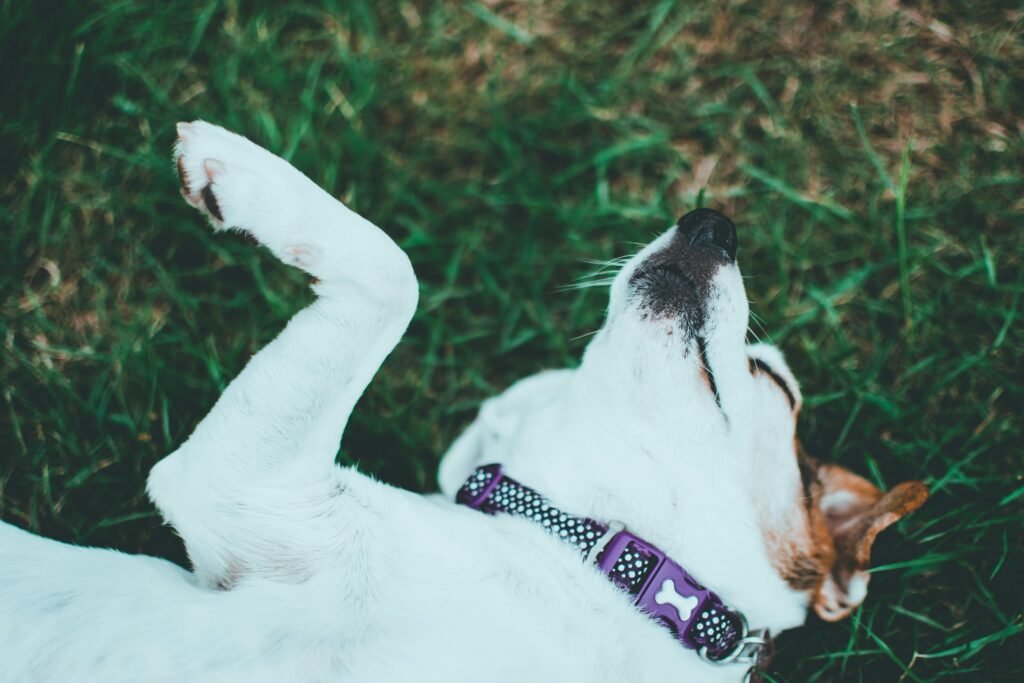
A dog’s stance can be like reading an open book of emotions.
- Confident stance
When a dog stands tall and confident, with their weight evenly distributed, it’s like they’re saying, “I’m the king or queen of this castle!” - Crouching or shrinking
Conversely, a dog that crouches or tries to make itself smaller is probably feeling insecure or scared. Picture them whispering, “Please don’t notice me right now.” - Alert stance
Then there’s the classic “I’m ready for anything” stance—front legs stiff, body leaning forward, and perhaps even raised hackles along their back. It’s their way of saying, “I’m on high alert and ready for action!” - Belly-up position
When your dog rolls over and exposes their belly, they’re showing you ultimate trust—or maybe just asking for a belly rub. It’s their way of saying, “I surrender” or “Let’s relax together!”
Even subtle shifts in their weight can be telling. A dog leaning slightly away from something might be cautious, while a dog leaning in is curious or intrigued. And those adorable side-to-side wiggles? That’s pure joy!
Sounds and Vocalizations
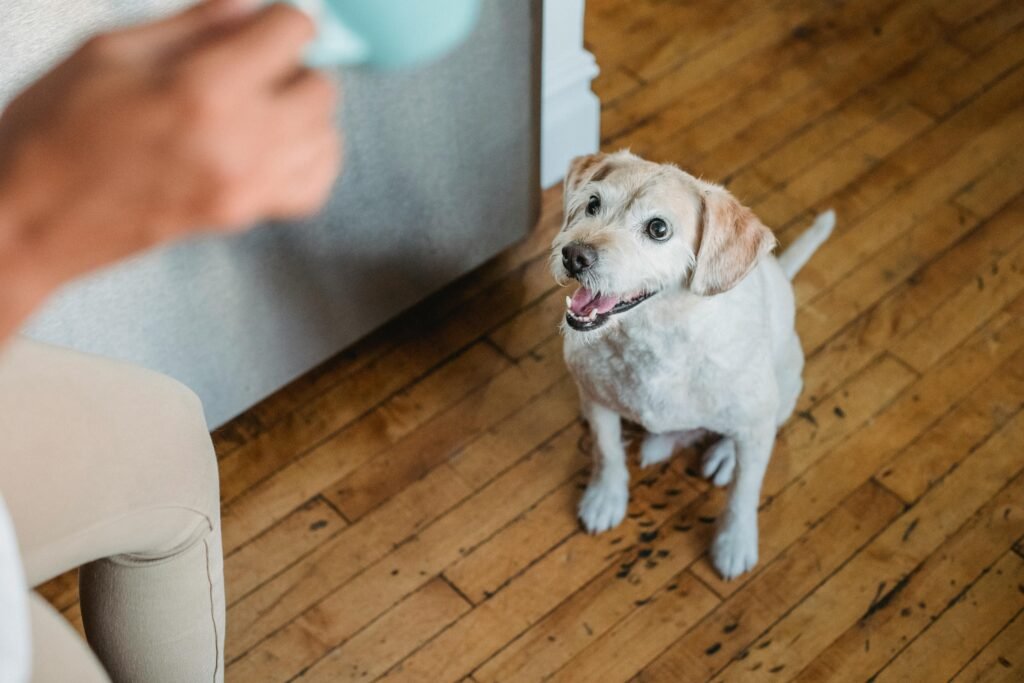
A dog’s vocalizations are like their personal dictionary of emotions.
- High-pitched bark
This often means excitement or a friendly greeting, like your dog saying, “Hey, I’m so happy to see you!” - Low growl
A low, rumbling growl is a warning, as if your dog is saying, “Back off, buddy.” - Whining
Though it can sometimes be a bit annoying, whining is your dog’s way of saying, “I need something. Can you help me?” - Howling
A dramatic howl is your dog’s version of a long-distance phone call, often expressing loneliness or trying to communicate with others over a distance. - Subtle sounds
Don’t overlook those adorable grunts and sighs. They’re usually signs of contentment, as if your dog is saying, “Ah, life is good.”
Movements of Paws and Body
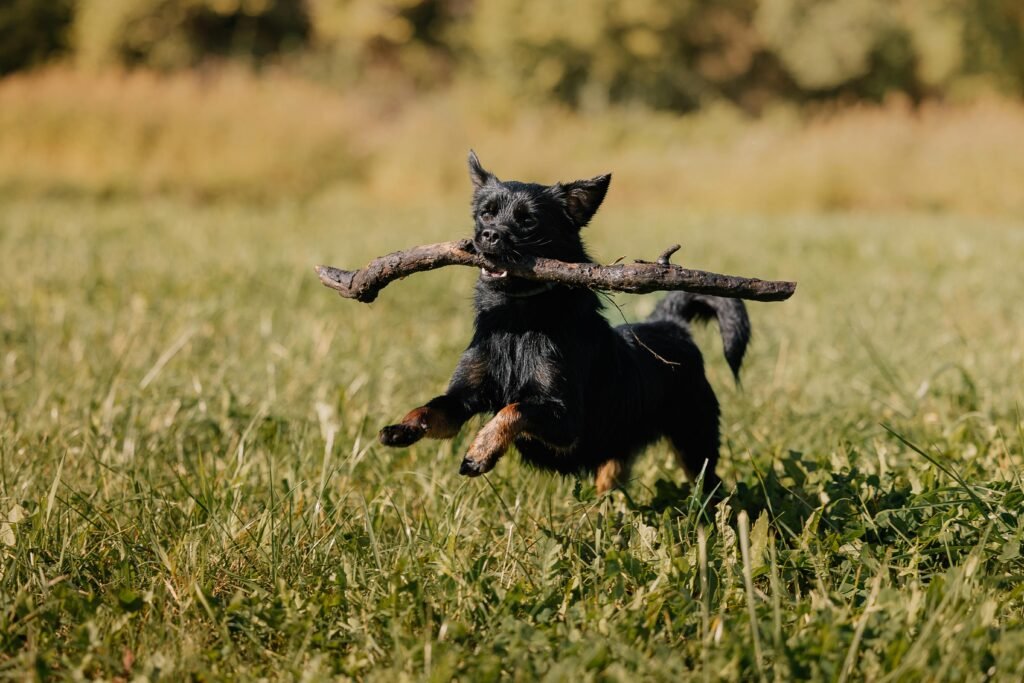
Even your dog’s paws and body movements are packed with meaning.
- Pawing
When your dog paws at you, they’re often asking for attention or affection. It’s their way of saying, “Notice me!” - Jumping
Jumping is a clear sign of excitement, but remember that not everyone loves a jumping dog. - Rolling over
While it can indicate submission, rolling over is more often your dog’s adorable way of saying, “Rub my belly, please!” - Playful gestures
Body slams, head nudges, or quick spins? Those are your dog’s invitations to play and expressions of pure happiness.
Making Sense of Mixed Signals
Dogs don’t always speak in a straightforward way—sometimes their signals can seem a little confusing.
- Mixed emotions
A dog wagging its tail while growling might be unsure about a situation, as if they’re saying, “I want to be friendly, but I don’t feel safe.” - Grinning or showing teeth
A toothy grin might look friendly, but it’s often a sign of nervousness or submission.
How to interpret these signals:
Look at the bigger picture, including the environment and all body language cues. Is your dog’s body tense? Are their ears pinned back? By piecing together the clues, you can better understand what’s going on in your dog’s world.
Book recommendation
If you are interested in learning more of the dog language there are a few amazing books I recommend reading!
- Canine Body Language: A Photographic Guide: I really recommend this book because it gives a great explanation about the dogs position, behavior and much more with over 300 photographs! Its very easy to look up the sign that your dog gives you because of the visual representations. It also emphasizes real-life training, behavior modification, and managing interactions between dogs or dogs and humans.
- Canine Communication: The Language of a Species: If you want to have a more detailed explanation about the broader concept of canine communication, covering vocalizations, scent marking, and social interactions or the evolutionary foundations of these behaviors, exploring how dogs communicate with each other and humans, and why these skills developed, than this book is for you.
Conclusion
By paying close attention to these movements, sounds, and expressions, you’ll build a deeper bond with your furry friend and become fluent in their unique language!
